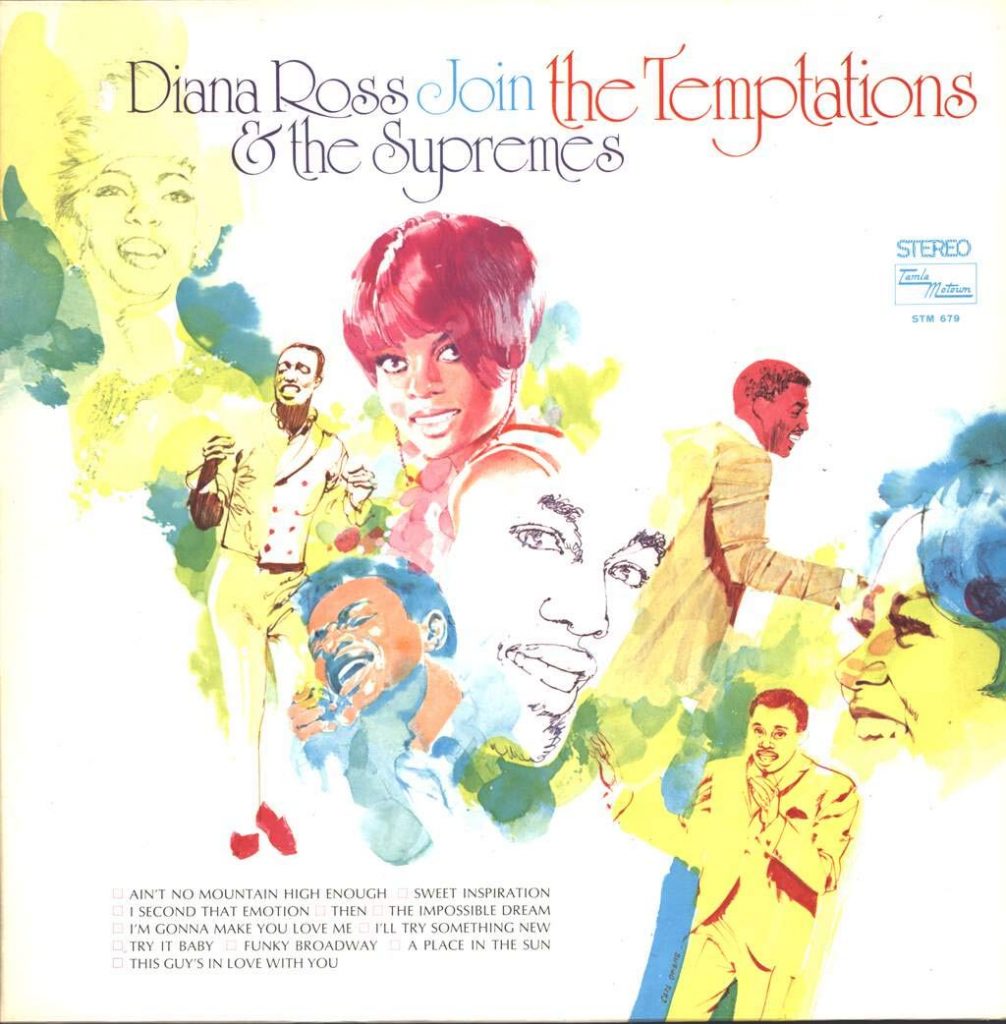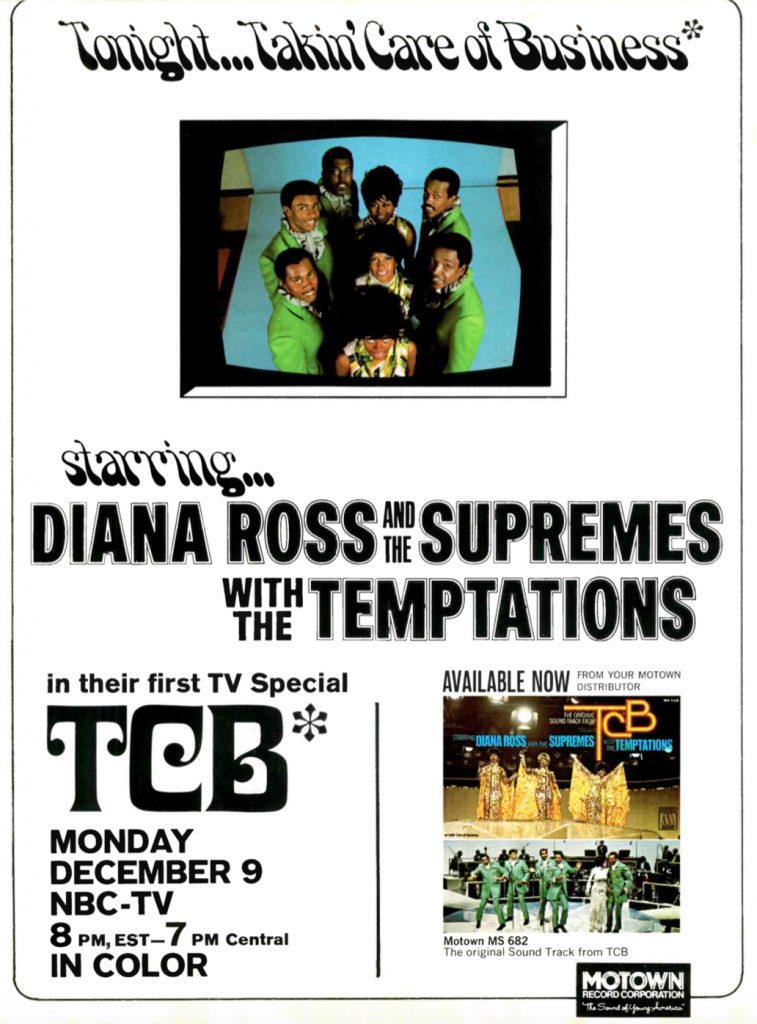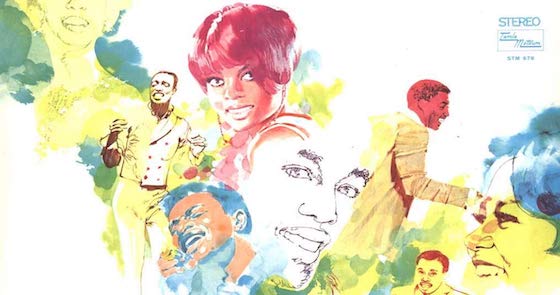 It all started in Detroit in the early 1960s, when two all-male groups, Otis Williams & the Distants and the Primes, joined forces and allied with a girl group called the Primettes. Both vied for the attention of the new recording king in their city, Berry Gordy Jr., and his main accomplice, Smokey Robinson. The two groups soon became part of the Motown hit factory. Then they got big, quickly.
It all started in Detroit in the early 1960s, when two all-male groups, Otis Williams & the Distants and the Primes, joined forces and allied with a girl group called the Primettes. Both vied for the attention of the new recording king in their city, Berry Gordy Jr., and his main accomplice, Smokey Robinson. The two groups soon became part of the Motown hit factory. Then they got big, quickly.
Gordy modeled much of his operation after the city’s Ford Motor Company, where he had once worked; he knew you didn’t keep Edsels around when you had Cadillacs. The Supremes and The Temptations—as the two groups became known—were the Cadillacs of Gordy’s operation. They were smooth and luxurious. Middle America saw them on TV frequently and heard them on the radio. The Supremes fought the Beatles for the top spot on the Hot 100 frequently, logging a string of chart-toppers. The Temps, too, were rarely away from the top 10.
By 1968, there had been some fine-tuning. Motown was a company, after all, that was meant to make money, and some individuals were replaceable. Florence Ballard was tossed out of the Supremes and Cindy Birdsong was in. The trio’s albums and 45 labels now carried the name Diana Ross and the Supremes. And David Ruffin was gone from the Temptations, trying to turn himself into a solo act; former Contour Dennis Edwards was in.

Gordy was well aware that TV was where it was at—the biggest stars in music got their own specials, and he wanted one for his top money-makers. An hour was secured from NBC and sponsorship was arranged with Timex. The special would be called TCB (Taking Care of Business). There would be singles, of course, but also a full-length album, Diana Ross & the Supremes Join the Temptations, which the adults could put on the hi-fi once the kids were off to bed, an accessible set of soul music that would provide the perfect background at their parties as they talked over rum and Cokes.
The album—its pen-and-ink drawings on the cover given a watercolor wash—reached a solid #2 on the Billboard album chart. With its five male and three female singers—well, a female lead and two women accompanying her—it was a crowded stage. As if this many singers wasn’t enough, the female vocal group the Andantes was pressed into service, the inimitable Funk Brothers provided rhythm and the Detroit Symphony was thrown in for good measure. If it were a car, it would be fully loaded.
So, how does it hold up? It’s Big Show Biz, and Big Show Biz isn’t in style these days. We like our stars up close and personal, and this isn’t that. This record puts its stars on a pedestal. They are meant to be admired and to thrill with their glamor and talent. Which they do.
With that in mind, you might expect a bombastic opening number, but the bass voices nearly sneak up at the start of the jazzy “Try It Baby,” the Gordy-penned 1964 Marvin Gaye hit.
The Motown Records catalog, in fact, gets a good workout. Motown often had its artists cover other Motown artists, and “I Second That Emotion,” “Ain’t No Mountain High Enough,” “I’ll Try Something New” and “A Place In the Sun” are all here.
Since it’s the ’60s, Burt Bacharach and Hal David must be included to keep the whole enterprise respectable, and “This Guy’s In Love With You,” a #1 for Herb Alpert earlier in the year, is given a fine interpretation.
There is, of course, a new single, “I’m Gonna Make You Love Me,” co-written by relative newcomers Kenny Gamble and Leon Huff with Jerry Ross. The song caught the collective ear of the public, zooming to #2 nationally, the only track on the LP to vault into the top 10 on the singles chart.
A real treat, however, is Dennis Edwards and Diana Ross trading leads on “Funky Broadway.” Edwards out-funks both Dyke and the Blazers and Wilson Pickett, while Ross out-slinks Aretha Franklin. It’s something else to hear.
Again, it is the 1960s and that means Broadway. After a couple other tracks fill out the middle of side two, we get a big closer with “The Impossible Dream,” featuring the Temps’ Paul Williams and Miss Ross. It’s good, but about a minute too long.
Of course, Gordy didn’t want only a TV special and an album. There is also a soundtrack to the TCB special, and completists will want to indulge in the 2004 outtakes collection for this album.
Diana Ross & the Supremes Join the Temptations wasn’t a landmark album, but when it arrived on Nov. 8, 1968, it was a time of flux. By the start of the 1970s, Ross would leave the group and launch a massively successful solo career. The reconstituted Supremes would soldier on with some good records, and Mary Wilson (who died in 2021) would eventually get an oldies act together, singing the hits into the 21st century. The Temptations would change, too, undergoing numerous personnel changes through the years (all of the prime-era members except for Otis Williams are now deceased). There would be books, films and even a hit Broadway musical celebrating their legacy.
Related: The Supremes’ Mary Wilson died in 2021
In 1968, though, Diana Ross & the Supremes Join the Temptations was a perfect indicator of Motown’s growth, offering irrefutable proof that Berry Gordy’s one-time mom-and-pop operation—a house converted into a recording and office facility—was quickly becoming a major Black-owned business, producing art that suited its ever-expanding scale and position in the entertainment world.
Bonus Video: Watch the Supremes and the Temptations perform “Respect” on the TCB special
Related: Our Album Rewind of The Supremes A Go-Go


1 Comment
The lettering at the top of the album cover makes it look like the Supremes get 3rd billing on their own record, behind Diana and the Temptations.